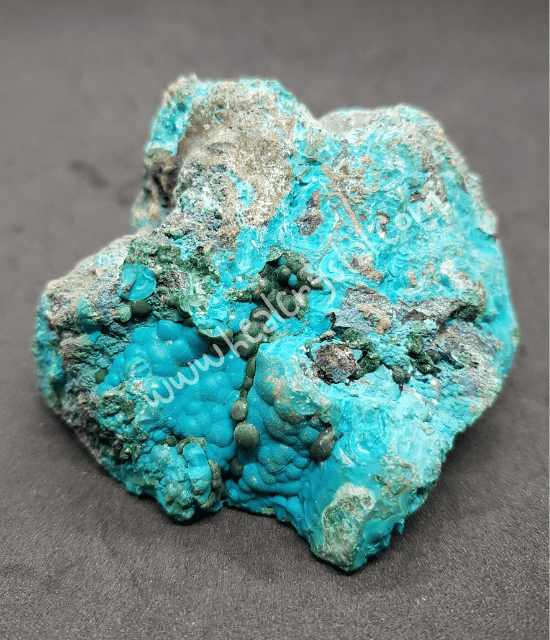Angelite (Anhydrite) Crystal – Healing Properties, Zodiac Signs, and Chakras
Angelite Properties

Angelite crystal meaning
Angelite (Anhydrite) crystal It is a celestite crystal that has been compressed for millions of years. Although they are similar in terms of some features, they have different effects. Angelite is known as an awareness stone. Healing gained importance with the emergence of the New Age view, which is dominated by the belief that “there is a cosmic force inside man that enables him to overcome his physical and psychological problems.” Believing in the ability to heal ourselves and someone else with our inner awareness without being an outside leader is at the heart of the New Age culture. Therefore, Angelite crystal is important in this culture due to its high awareness effect.
Angelite healing properties
Angelite can be used most effectively in our third eye chakra to increase awareness and consciousness. We can connect with the angelic realms using our telepathy and psychic ability. This connection can also be realized through our dreams. When we wake up, we can wake up with psychic gifts. Since this chakra is located in our brain, Angelite can help maintain our mental and hormonal balance. It facilitates weight control and balancing body fluid. It improves mental operations and logical processes.

metaphysical properties of Angelite
We can use Angelite in our soma chakra in the most effective way to reach astrological and universal knowledge. We must access this information to meet our needs for acceptance and peace. If we can see the big picture and our direction of going, we can know what is right for ourselves while making our choices. When we do not have the power to change what we experience, we can accept what happens and find peace. When we find peace, we can only speak the truth and develop an understanding of others.
Angelite works effectively in our higher heart chakra. It is this chakra that can repair us both physically and spiritually. Angelite can play a protective and curative role against infectious diseases by improving our immunity against viruses and bacteria. It can relax our lungs. It increases the healing speed by stimulating muscle, bone, and all tissues and can have an anti-ageing effect. It can even increase the rate of recovery after organ transplantation and surgery. Its repair power is so sufficient that it is also called a rebirth stone because it can regenerate tissue. Angelite also contributes to nerve and vascular repair. It helps eliminate the disorders related to calcium absorption in the bone, such as osteoporosis and osteoarthritis. It can fix problems in the blood clotting balance and our lymph system.
Buying this crystal in any form, gem or raw, is easy. Our blog is reader supported. Click on our Etsy or Amazon links to access unique pieces made from real minerals with attractive handwork.
For Angelite benefits, check out the charts where we combine the benefits and chakras most effectively.
| Soma | -Acceptance- -Astrological Insight- -Astral Travel- -Energy Blockages- -Etheric-Physics Body Alignment- -Peace- -Understanding- -Universal Knowledge- -Speaking the Truth- -Serenity- |
| Third Eye | -Anger- -Awareness Stones- -Communication with Angels- -Consciousness- -Dreams- -Telepathy- -Edema- -Fear- -Healer Stone- -Hypertension- -Psychic Gifts- -Maths- -Liquid Balance- -Sleep Problems- -Urine Extractor- -Weight Control- |
| Higher Heart | -Anti Aging- -Bone/Muscle/Cartilage Repair- -Cancer Prevention- -Coagulation Balance- -Cough/Cold- -Hemoglobin Deficiency- -Improvement- -Infectious Diseases- -Inflammation- -Lungs- -Lymphatic System- -Nerve Repair- -Organ Tissue Repair- -Organ Transplantation/Surgery- -Osteoarthritis- -Osteoporosis- -Parathyroid/Thyroid Problems- -Pain/Burn- -Rebirth Stone- -Tissue Repair- -Vein Repair- -Virus/Bacteria- |
How to use Angelite Crystal?
Anyone can use this crystal. It can be used as jewellery during the day and put under the pillow while sleeping. Therefore, its benefits become stronger in long-term use. When used continuously, the crystal should be rested occasionally. If it is used as a crystal bracelet, read our recommendations.
How to clean Angelite?
The crystal must be cleaned after it is used for any purpose. All methods can be used to clean polished Angelite, such as washing it in running water, leaving it in water, and leaving it in the soil.
Note: Angelite should be used in a polished way. It should not be exposed to water and moisture. When it touches the water, it absorbs it and turns into a gypsum crystal!
Angelite is a form of anhydrite, a dehydrated form of gypsum. When angelite is exposed to water or submerged in water for an extended period, it can undergo a chemical reaction where it absorbs water molecules and reverts to its original gypsum form. This process is known as hydration.
During hydration, the angelite may turn into gypsum crystals or transform into a softer, powdery substance resembling gypsum. This reversible transformation means the gypsum can dehydrate back to Angelite if the water is removed or evaporates.
It’s important to note that this transformation is not instantaneous but occurs gradually over time in the presence of moisture. Therefore, avoiding exposing Angelite to prolonged contact with water is advisable to prevent the conversion to gypsum.
angelite vs gypsum
Angelite and gypsum are two minerals that share some similarities but also have distinct differences. Here’s a comparison between angelite and gypsum:
- Composition: Angelite is a blue anhydrite mineral composed of calcium sulfate. Gypsum, on the other hand, is a hydrated calcium sulfate mineral. The presence of water molecules in the chemical structure of gypsum gives it a different composition compared to Angelite.
- Hardness: Angelite has a relatively low hardness of around 3 to 3.5 on the Mohs scale, making it relatively soft and susceptible to scratches. Gypsum has a similar hardness of around 2 on the Mohs scale, indicating that it is also relatively soft.
- Colour: Angelite is known for its pale blue colour, although variations in shade may occur. Gypsum, on the other hand, can occur in various colours, such as white, grey, beige, brown, and even pink, depending on impurities present in the mineral.
- Crystal Structure: Angelite and gypsum have similar crystal structures. Both minerals belong to the monoclinic crystal system and often form in elongated, prismatic crystals. However, the crystal habits and formations between angelite and gypsum can vary.
- Uses: Angelite is primarily used as a gemstone and is often shaped into beads, cabochons, or carved into decorative items. It is also valued for its metaphysical properties. Gypsum, on the other hand, has a wide range of practical applications. It is used in construction, as a filler or binder in products like plaster and drywall, and in industrial processes.
While angelite and gypsum share similarities in their calcium sulfate composition and crystal structure, their specific properties, colours, and uses set them apart. Angelite is known for its blue colour and metaphysical properties, while gypsum is a versatile mineral used in various practical applications.
What are Angelite’s other features?
| Zodiac sign | Aquarius |
| Number | 1 |
| Planet | Uranus |
| Mineral Information | Anhydrous Calcium Sulfate |
| Chemical Composition | CaSO4 |
| Angelite Hardness | 3,5 (Mohs) |
Angelite Types
Angelite is a type of blue anhydrite mineral primarily found in Peru. It is known for its soft blue colour and is often used in jewellery and spiritual practices. There are no specific “types” of Angelite in terms of different varieties or classifications. However, it’s worth mentioning that angelite is sometimes referred to as “blue anhydrite” or “blue celestite” due to its resemblance to celestite, another blue mineral. However, Angelite is distinct from celestite in terms of its chemical composition and formation process.
Angelite is primarily known for its pale blue colour, its most common and characteristic hue. However, it’s worth noting that natural Angelite can sometimes exhibit variations in colour. These variations can range from a light blue-grey to a deeper blue shade. However, these colour variations are typically within the blue spectrum and do not extend to entirely different colours. The overall colour of Angelite remains predominantly in the blue range, even with these slight variations.
Angelite vs. Celestite
Angelite and celestite are two distinct minerals that are often confused due to their similar blue colour. Here are some key differences between angelite and celestite:
- Composition: Angelite is a type of blue anhydrite composed of calcium sulfate. Celestite, on the other hand, is a strontium sulfate mineral. While both minerals contain sulfate, the presence of different elements gives them unique properties.
- Hardness: Angelite is relatively soft, with a Mohs hardness of around 3 to 3.5. It can be easily scratched and is more delicate than many other gemstones. Celestite, in contrast, has a higher hardness of around 3 to 3.5. It is still relatively soft but slightly harder than Angelite.
- Crystal Structure: Angelite and celestite have different crystal structures. Angelite typically forms compact, granularly with a fibrous or bladed structure. Celestite, on the other hand, often forms in well-defined crystals with a prismatic or tabular shape.
- Origin: Angelite is primarily found in Peru, where it is often mined and sourced. Conversely, Celestite has a wider global distribution and can be found in various countries, including Madagascar, Brazil, Mexico, and the United States.
- Metaphysical Properties: In terms of metaphysical properties, Angelite promotes peace, tranquillity, and communication with angelic realms. It is often used for meditation and spiritual practices. Celestite is also linked to calming energies and promoting harmony, but it is believed to have a stronger connection to divine and higher realms.
While angelite and celestite share a beautiful blue colour, they differ in composition, hardness, crystal structure, origin, and metaphysical properties. It’s important to note these distinctions when identifying and working with these minerals.




